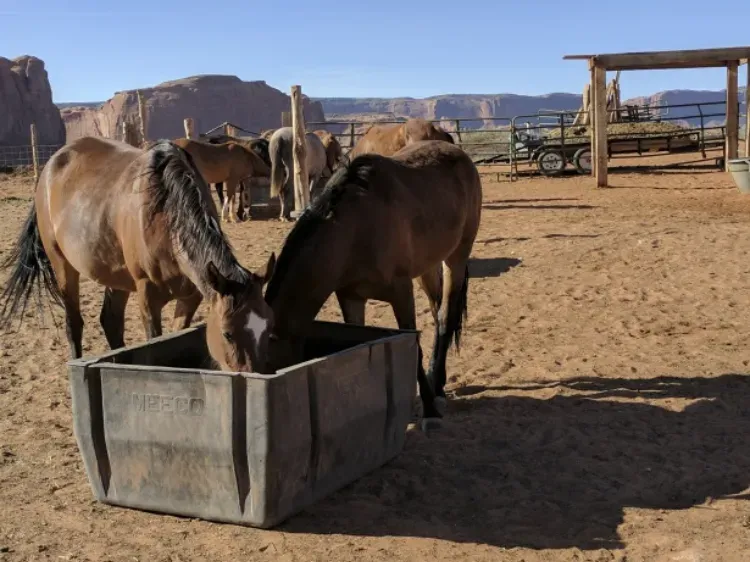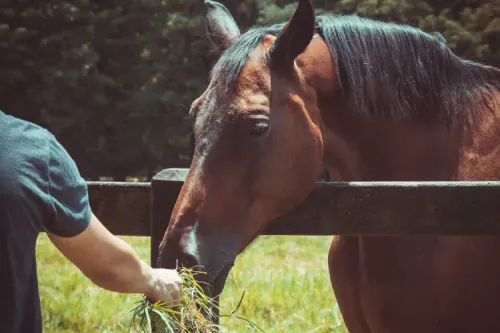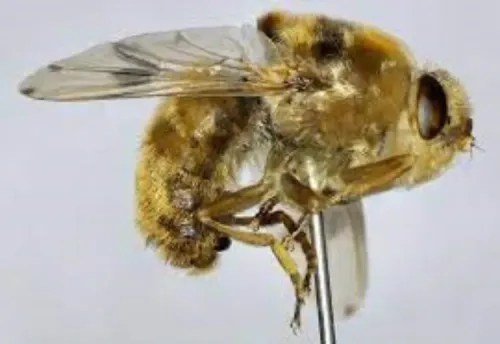
Sand colic is associated with sandy soils/other soil types and certain grazing practices, also weather conditions cause horses to develop sand colic. To complicate this, some horses do not show clinical signs of moderate sand accumulation, while others develop sand colic without having a colon impaction.
Don’t worry and have peace of mind as horses will avoid developing sand colic through correct management. So this article outlines the management problems and gives the best prevention strategies.
Management Problems
Horses get sand colic from ingesting too much sand and other gritty soil particles. This causes gut impaction and then colic develops. Here are the sand colic risk factors:
- Overgrazed land with exposed areas of soil
- Individual grazing habits
- Prevailing weather conditions
- Soil type.
Now we will look at these four management problems in greater depth:
1. Overgrazed Land
Overgrazing means insufficient grass cover and then horses are grazing close to the grassroots picking up too much soil. This happens with horses kept on restricted pastures to reduce their calorific intake.
2. Individual Grazing Habits
Different grazing habits mean some horses naturally eat closer to the grassroots and this is even with adequate grass, These horses’ are attracted to bare patches and eat sand/dirt as they lack salt and other essential minerals.
3. Drought Conditions
Extremely dry conditions cause three problems and these are:
- Intensive rain after a drought splashes grass with muddy/sandy water, and this increases the ingesting of soil
- Long drought conditions loosen soil particles so they are picked up by grazing horses
- A drought condition reduces grass coverage and exposes soil.
4. The Soil Type
The soil structure has a big impact, with sandy soils causing the most cases of sand colic, while clay soils cause the least number of cases.
To sum things up. Horses on sandy overgrazed and parched soils are at the greatest risk of developing sand colic. Those on any overgrazed soil will have a greater chance of developing an impaction. So horses that cannot be relocated to better grazing need management strategies to prevent equine sand colic from developing.
The ways to prevent Sand Colic
1. Feed Hay to Prevention Sand Colic
A daily hay ration equal to 2.5% of the horse’s body weight is a highly effective way of moving sand through the colon. Go to this table to find the amount of hay for your at-risk horse.
| Horse Type and Weights and Daily Hay Ration |
| 1. Small Arab of 900lb/410 kg weight ….. feed 22.5lb/10.2kg of hay |
| 2. Large Arab or small Morgan of 1000lb/455kg weight ….. feed 25lb/11.4 kg of hay |
| 3. Large Morgan or small Quarter Horse of 11000 lb/500 kg ….. feed 27.5lb/12.5kg of hay |
| 4. Average Quarter Horse of 12000 lb/545kg ….. feed 30lb/13.6Kg of hay |
| 5. Large Quarter Horse of 1300 lb/590kg ….. feed 32.5lb/14.8Kg of hay |
Hot Tips to use with the Hay Solution
- Feed hay in high-sided tubs on rubber mats to reduce the amount of soil consumed
- Better still use slow feeders that prevent hay from falling on the ground
- Provide a field salt block to discourage eating soil.

Article Suggestion
How To Soak Hay for Horses2. Feeding Psyllium Husk with Magnesium Sulfate (Epsom salt) to prevent Sand Colic
Some owners will not want to use the hay method. In these situations feed psyllium husk with magnesium sulfate to stop equine sand colic. Both act differently:
- Psyllium husk act as a binding agent and this helps flush sand and soil through the colon
- Epsom salt is a laxative and this helps push excess sand through the horse’s colon.
Many horses do not like psyllium husks and they must be fed as dry as possible so they expand and attract particles within the intestines. However, horses usually like Epson salt, so mixing both together is a good strategy. There is strong evidence that feeding this combination is more successful at removing sand than just feeding psyllium husks.
Hot Tips to use with the Psyllium Husk/ Magnesium Sulfate (Epsom Salt) Solution
- Follow the product instructions when using psyllium to remove sand from your horse’s colon
- Epsom Salt is a powerful and quick-to-react laxative so use caution and experiment with small amounts added to psyllium husks and test your horse’s reaction
- If in doubt, ask your vet how much Epson salt to feed with psyllium husk
- Provide a field salt block to discourage eating soil
- Reduce the time horses are at grass by stabling overnight with a good feed of hay
- Never feed psyllium husk or Epsom Salt to a horse with colic, but do seek prompt veterinary help.
How to Monitor for Sand Colic?
Monitor your high-risk horse by weekly testing his dung using this method:
- Fill a bucket of water and add a few handfuls of dung
- Stir in the dung, and then leave the solution for 10 minutes before stirring again
- Wait another 10 minutes and slowly tip out the dung and water to detect any sand left in the bottom of the bucket.
Interpreting your Horse’s Dung
Any sand detected in the bucket has been moving through the horse’s gut, and this indicates sand within the horse’s colon. However, don’t be concerned about really tiny quantities of sand as this indicates sand being flushed through the system without a problem.
When should I be concerned?
Be concerned if you detect a thin layer of sand in your bucket because this means that a significant amount of sand remains in your horse’s colon. This will require intervention to stop sand colic from developing.
Still having problems?
This is the stage to consult your vet and follow their advice. Your vet will carry out a rectal palpitation examination. In addition, large amounts of sand shifting in the horse’s colon can be detected using a stethoscope. For a better picture, your vet will use abdominal radiographs.

Article Suggestion
Solve Horse Fly Problems with Food Additives and Homemade Fly Repellents
